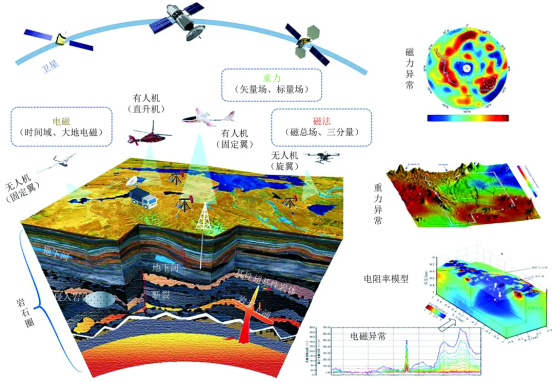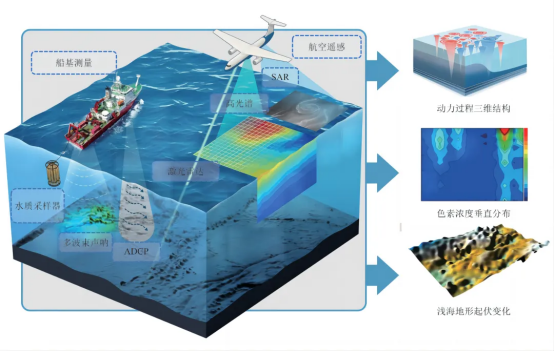Exploring the Perspective of the Earth: The New Generation of Earth Observation Technologies
Title: Exploring the Perspective of the Earth: The New Generation of Earth Observation Technologies
Introduction:
With the evolution of ideas and advancements in technology, the observation of the Earth system is shifting from merely seeing the Earth's appearance to probing into the inner workings of its spheres. "Exploring the Perspective of the Earth" involves using various earth observation methods to conduct detailed and comprehensive detection of atmospheric, hydrospheric, biospheric, and lithospheric physical elements, as well as their internal structures and evolutionary processes, to obtain more "precise" and "in-depth" information about Earth's various spheres. This has become an active pursuit and important direction in the development of the new generation of earth observation technologies.
Why Explore the Perspective of the Earth?
The Earth system is a complex giant system composed of the atmosphere, biosphere, hydrosphere (including the cryosphere), and lithosphere. In the new era of evolving Earth system science concepts and accelerated technological development, scientists are no longer satisfied with merely observing the Earth's appearance but instead aim to delve deeper into detecting, analyzing, and understanding the internal workings of Earth's spheres. Exploring the mysteries within the Earth system is a necessary choice for addressing human resource, environmental, and sustainable development issues.
What is "Exploring the Perspective of the Earth"?
"Exploring the Perspective of the Earth" focuses on perceiving the "invisible" internal information of Earth's system spheres. It utilizes advanced remote sensing detection technologies with penetrability, multidimensionality, and high density, such as electromagnetic, microwave, laser, and gravity, based on space-based, air-based, and ground-based observation platforms, to conduct detailed and comprehensive detection of atmospheric, hydrospheric, biospheric, and lithospheric physical elements, internal structures, and evolutionary processes. This represents an important direction in the development of the new generation of earth observation technologies and provides basic and strategic information resources for economic and social development, rational utilization of resources and the environment, food security, and marine rights protection.

How to Explore the Perspective of the Earth?
In the context of deepening Earth system science concepts and breakthroughs in scientific and technological innovation, focusing on the internal detection of Earth's system spheres, earth observation technologies continue to develop and innovate, becoming a core driving force for the development of Earth sciences. Enhancements in new types of payload observation capabilities, improvements in observation platform payload integration capabilities, and advancements in comprehensive Earth detection theory provide a theoretical and technical foundation for joint detection, correlation modeling, and information reconstruction of multiple physical quantities within the Earth system.

Key Areas and Technologies:
·Atmospheric Perspective: Utilizing full-spectrum, active-passive cooperative, and satellite-aircraft-ground joint observation methods to achieve three-dimensional observation of key atmospheric elements such as meteorology, radiation, and composition.
·Forest Perspective: Leveraging various remote sensing techniques to obtain three-dimensional detailed structural information about forests.
·Solid Earth Perspective: Employing multi-field, active-passive cooperative, and satellite-aircraft-ground joint observation schemes to obtain Earth physical fields such as gravity, magnetism, and electromagnetism, and conduct comprehensive analysis of the lithosphere's penetrating, deep, and multi-field characteristics.
·Ocean Perspective: Developing technologies to comprehensively utilize remote sensing and underwater in-situ observations to achieve透视detection of internal ocean information, from surface depths to subsurface and even middle and deep water bodies.
Conclusion:
"Exploring the Perspective of the Earth" represents an attempt and exploration of a new system of earth observation technologies. It still requires continuous development and improvement in terms of key technologies, application innovations, and development paths. With breakthroughs and accelerated changes in detection mechanisms, advanced payloads, and data applications, "Exploring the Perspective of the Earth" is expected to achieve dynamic and three-dimensional detection of multiple physical quantities within Earth's spheres, generate full-space, high-reliability perspective data resources, and lead the development of a new generation of Earth science knowledge systems centered on sphere perspective information.













Please first Loginlater ~